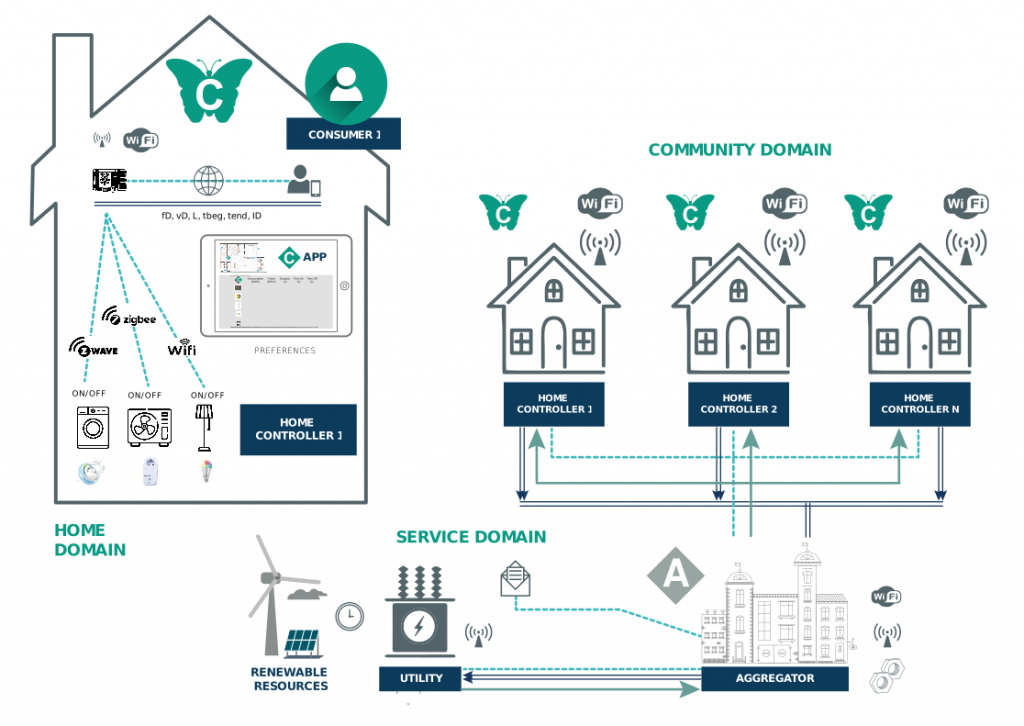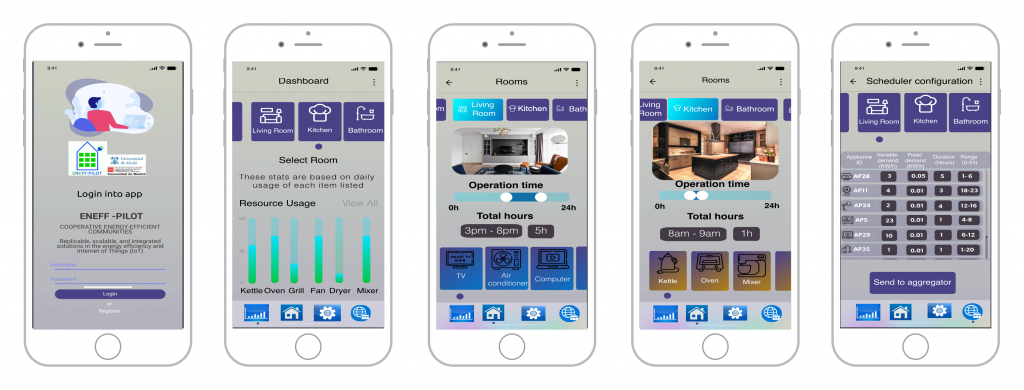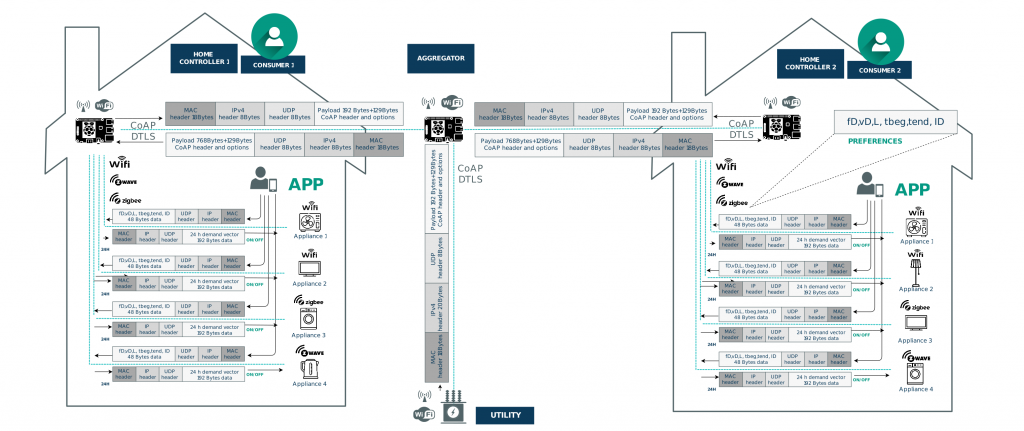Unlike the majority of previous Demand Response strategies that focus on pricing to reduce the peak-to-average ratio, ENEFF-PILOT aspires to promote a transformation of the whole energy value chain by making consumer communities cooperate targeting the available renewable energy supply.
Governments & policy makers are providing programme support to promote energy efficiency in households.
The development of innovative Demand Response (DR) services leverages consumers to get more control over their electricity consumption.
Recently electricity market addressing issues of reliability in power supply is looking toward demand side management policies. DR remains an experimental technique.
Potential and acceptance depend on the accessibility, security and user-friendliness of the technology.
Our PILOT Testbed…
The platform
The algorithm
The feasibility
The pilot testbed deployed serves as to evaluate the feasibility of
- the centralised aggregation algorithm’s overheads,
- suitability of cost-effective platforms as home controllers that autonomously control the appliances, and
- overheads and security of the communication links between the aggregator and the home controllers.
To validate the feasibility of i, we analysed the pilot performance in terms of the computational and communication costs under a series of network protocols (sockets-UDP, MQTT/TLS and CoAP/DTLS) and links (WiFi, Zigbee and Z-Wave), community scenarios (varying the number of appliances, so the complexity of the algorithm) and consumer behaviours (regarding their preferences flexibility). We extracted consumption information in time frames from the Living Labs’ datasets, e.g. Dataport, that configured the experiments conducted onto our testbed. Processing and communication overheads lie within feasible ranges, i.e., the Aggregator requires less than 2 seconds to schedule consumer communities with 4-appliances each, whereas the latency of the link with home controllers takes less than 100 ms.
To validate the feasibility of ii, we have implemented our framework over 5 different hardware platforms (a laptop, Raspberry Pi boards 4, 3B+, 3B and an Arduino Mega board). Experiments conducted considering different size of consumer communities throw feasible results, being the Raspberry Pi 4 board an efficient, lightweight deployment option for both, home controllers and Aggregator devices.
Finally, to validate the feasibility of iii, security of the communication between Aggregator and home controllers was analysed and found complying with the relevant security properties such as availability, confidentiality and integrity. For instance, we demonstrated that our applications running over WiFi links and UDP sockets on Raspberry Pi 4 boards are fast though insecure. Secure CoAP (with DTLS) displays data encryption, automatic key management and integrity protection as well as authentication with acceptable overheads (about 200 ms).
The Market
Next figure illustrates our use cases and their market opportunity:

(source: Markets and Markets Knowledge Store platform of high growth niche markets available online at www.marketsandmarkets.com)










